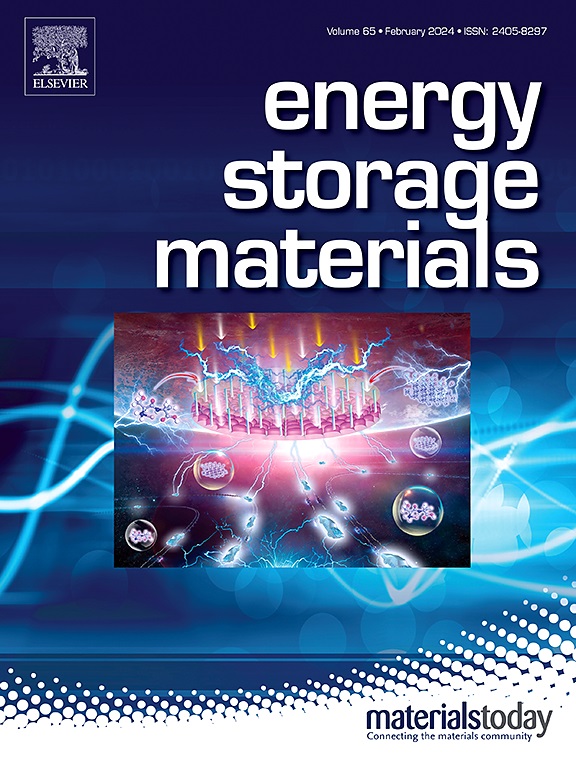高能可充电金属电池的分离器工程:基本原理、设计策略和观点
IF 20.2
1区 材料科学
Q1 CHEMISTRY, PHYSICAL
引用次数: 0
摘要
可充电金属电池由于具有较高的金属阳极理论容量,在下一代储能技术中具有很好的应用前景。然而,金属阳极的枝晶生长猖獗,副反应不良,固体电解质界面不稳定等问题严重导致循环寿命短,安全风险高。近年来,分离器工程作为一种简单而有效的解决这些棘手问题的策略,引发了大量的研究活动。在此,我们对可充电金属电池隔膜工程的重大进展进行了评述。首先,概述了对分离器的理化和电化学要求的基本原理。随后的讨论特别致力于理解各种分离器策略的设计原则,包括孔隙调节,界面功能化和热机械调节,并深入了解其对性能改善的有效性。最后,针对安全高效的可充电金属电池的开发和实际应用,对隔膜工程目前面临的挑战和未来的前景进行了详细的预测。本文章由计算机程序翻译,如有差异,请以英文原文为准。


Separator engineering for high-energy rechargeable metal batteries: fundamentals, design strategies and perspectives
Rechargeable metal batteries hold outstanding prospects for next generation energy storage technologies due to their high theoretical capacities of metal anodes. However, the formidable problems regarding rampant dendrite growth, undesirable side reactions, and unstable solid electrolyte interfaces of metal anodes dramatically incurs short cycle lifetime and high safety risk. Separator engineering has triggered massive research activities as a simple yet effective strategy to mitigate these intractable issues in recent years. Herein, we offer a critical review on the significant advances of separator engineering for rechargeable metal batteries. To start with, the fundamentals of physiochemical and electrochemical requirements for separators are outlined. Subsequent discussion is specifically devoted to comprehend the design principles of various separator strategies, including pore adjustment, interfacial functionalization, and thermomechanical modulation, and to pave an in-depth understanding of their effectiveness on the performance improvement. Finally, the existing challenges and future perspectives of separator engineering are elaborately projected towards the development and practical deployment of safe and efficient rechargeable metal batteries.
求助全文
通过发布文献求助,成功后即可免费获取论文全文。
去求助
来源期刊

Energy Storage Materials
Materials Science-General Materials Science
CiteScore
33.00
自引率
5.90%
发文量
652
审稿时长
27 days
期刊介绍:
Energy Storage Materials is a global interdisciplinary journal dedicated to sharing scientific and technological advancements in materials and devices for advanced energy storage and related energy conversion, such as in metal-O2 batteries. The journal features comprehensive research articles, including full papers and short communications, as well as authoritative feature articles and reviews by leading experts in the field.
Energy Storage Materials covers a wide range of topics, including the synthesis, fabrication, structure, properties, performance, and technological applications of energy storage materials. Additionally, the journal explores strategies, policies, and developments in the field of energy storage materials and devices for sustainable energy.
Published papers are selected based on their scientific and technological significance, their ability to provide valuable new knowledge, and their relevance to the international research community.
 求助内容:
求助内容: 应助结果提醒方式:
应助结果提醒方式:


